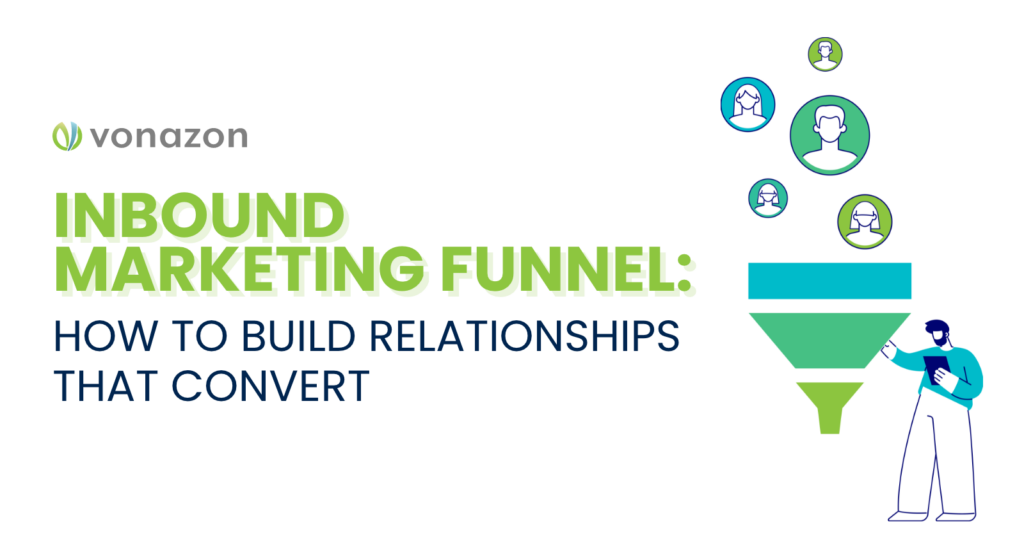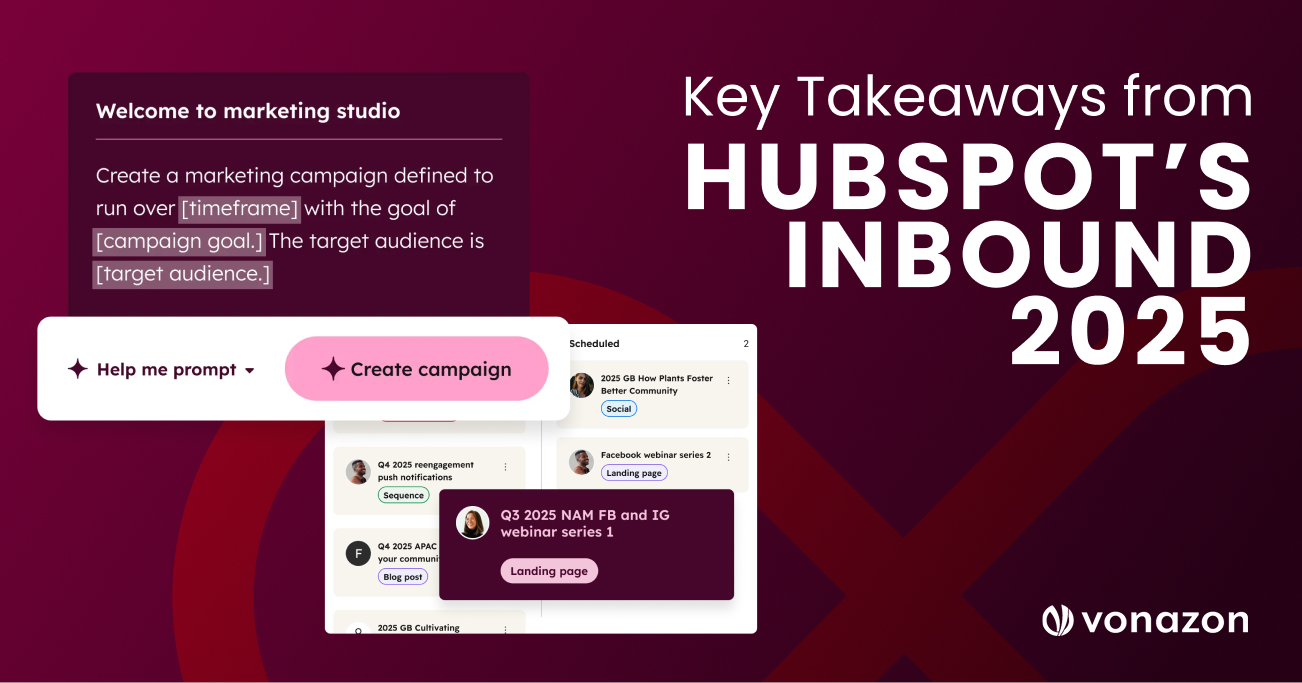Inbound Marketing Funnel: How to Build Relationships That Convert
The inbound marketing funnel is a proven foundation for connecting with your audience in meaningful ways, guiding them from awareness to loyalty. In today’s buyer-driven world, where 70% of the decision-making process happens before a sales conversation even begins, understanding and leveraging this funnel is essential.
If you want to turn casual browsers into long-term customers, you need to master the mechanics of the inbound marketing funnel and learn how to optimize it for your business goals.
Let’s dive in.
What Is the Inbound Marketing Funnel?
At its core, the inbound marketing funnel is a strategic way to nurture potential customers throughout their buyer journey with targeted content that aligns with where they are in the journey. Instead of interrupting their day with ads they didn’t ask for, you’re meeting them on their terms with helpful, relevant content.
The funnel consists of three primary stages:
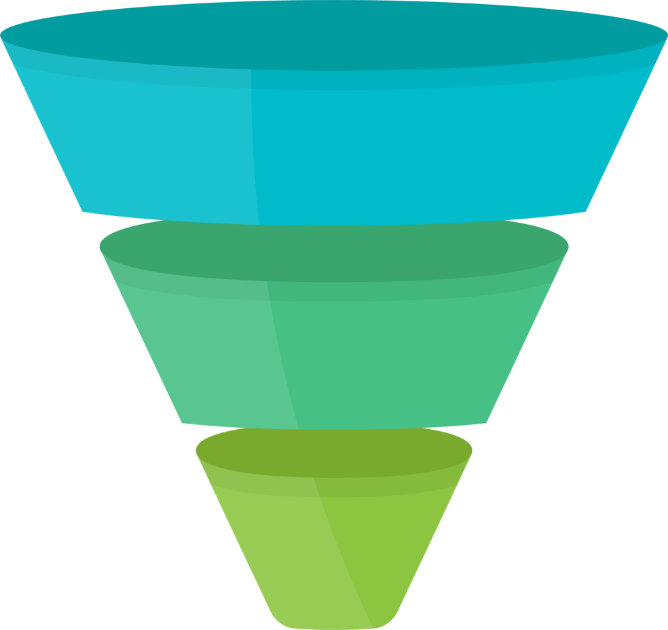
Each stage works together to move your potential customers through a seamless buying journey, ensuring prospects get the information they need to make an informed decision.
Why the Inbound Marketing Funnel Matters
The way people make buying decisions has changed dramatically. With the vast amount of information readily available at their fingertips, buyers are empowered like never before. They no longer rely on salespeople for their first introduction to a product or service. Instead, they’re taking the reins of their buying journey by diving deep into:

Self-guided Research

Reading Blog Posts to Uncover Insights

Downloading Comprehensive Guides to Evaluate Options

Watching Videos for Detailed Demonstrations or Authentic User Experiences
This shift has transformed the role of sales teams, who now step in much later in the process, after buyers have already formed educated opinions and preferences. Providing resources that address their questions and concerns establishes your brand as a reliable source of information. Rather than disrupting their journey, you seamlessly integrate into it, offering guidance that resonates and builds trust. Each interaction reinforces your credibility, encouraging prospects to see your brand as a solution they can rely on.
As prospects engage with this value-driven content, their connection to your brand deepens. Over time, they transition from casual interest to genuine consideration. This approach creates relationships that build loyalty, making your brand an integral part of their decision-making process.
For B2B companies, this approach is especially effective. Longer sales cycles and complex decision-making mean that buyers need more education and reassurance before committing.
A well-optimized funnel helps nurture these relationships every step of the way.
Breaking Down the Funnel Stages
Top of Funnel:
Attracting Attention
The top of the funnel is all about visibility. Early in the buyer’s journey, your audience is often exploring broadly, seeking information and ideas rather than specific solutions. This is your chance to capture their attention with compelling, educational content that aligns with their interests and starts building trust.
For example, let’s say you’re a B2B software provider. A blog post titled “The Top 5 Challenges Facing Modern IT Teams” could introduce a common pain point, while also positioning your brand as a knowledgeable resource. SEO also plays a significant role here by helping you show up in the search results when prospects are looking for answers.

Key Tactics
- Publish educational blog posts and videos that answer common questions and address industry pain points.
- Use social media to share helpful insights and engage with your audience on platforms where they spend their time by offering bite-sized, actionable advice.
- Optimize your website for SEO to attract organic traffic by appearing in search results for the topics your audience is looking up.
- Leverage paid ads, such as PPC or social media ads, to amplify your content and reach new audiences quickly.
Middle of Funnel:
Building Relationships
Once you’ve captured attention, the middle of the funnel is where you nurture that interest. At this stage, prospects are exploring their options and looking for solutions that fit their needs. Your job is to build trust by providing deeper, more targeted content.
For instance, offering an eBook titled “How to Streamline IT Operations with Automation” can help move leads further along the funnel. Case studies, webinars, and comparison guides are also great tools for demonstrating value and expertise.
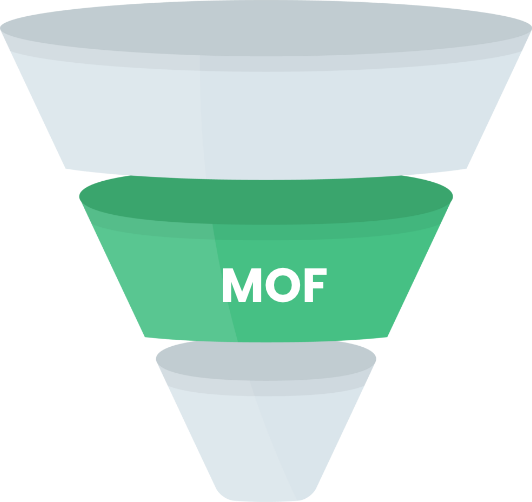
Key Tactics
- Offer gated educational resources like eBooks, whitepapers, and guides – accessible in exchange for contact information – that provide in-depth solutions to specific problems or opportunities.
- Use case studies to build credibility and demonstrate how your solutions have worked for others.
- Engage with interactive content by hosting webinars or offering live demos to connect directly with prospects and showcase your expertise.
- Help prospects evaluate their options with comparison guides that highlight your unique benefits.
Bottom of Funnel:
Driving Conversions
The bottom of the funnel is where all your hard work pays off. At this point, your prospects are ready to make a decision. Your role is to make it as easy and compelling as possible for them to choose your solution.
Free trials, consultations, or product demos are highly effective at this stage. Personalized follow-ups and clear CTAs can also help nudge them toward a final decision.
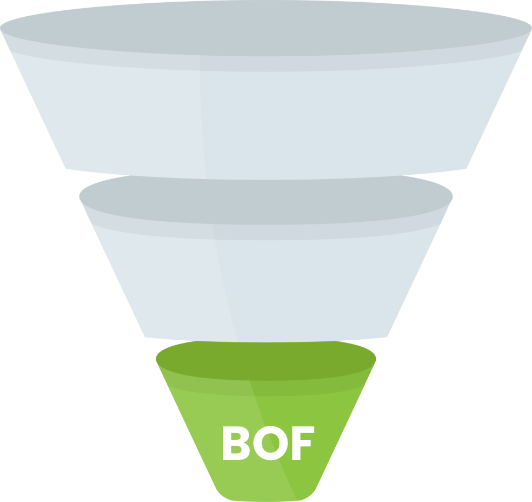
Key Tactics
- Offer free trials or demos to let prospects experience your product or service firsthand.
- Provide consultations to help leads see exactly how your solution fits their needs.
- Use clear and compelling CTAs to guide prospects toward the next step with straightforward calls to action.
- Deliver personalized follow-ups to address prospects’ specific questions and interests.
How to Optimize Your Inbound Funnel
Use Data to Guide Your Strategy:
Every interaction within your funnel generates valuable data. Tools like HubSpot can help you track what’s working and where prospects are dropping off, giving you the insights you need to refine your approach.
Segment Your Audience:
Not all leads are created equal. By segmenting your audience based on their behaviors, interests, and needs, you can deliver more personalized and impactful content.
Test and Iterate:
The best inbound funnels are never static. Regularly test your content, CTAs, and workflows to identify what drives the best results.
Align Marketing and Sales:
A disconnect between your marketing and sales teams can derail your funnel. Ensure both teams are aligned on goals, messaging, and processes for a seamless handoff.
The Role of HubSpot in Funnel Optimization
HubSpot takes the guesswork out of managing your marketing funnel, giving you the tools to work smarter and grow faster. Its tools streamline everything from email automation to lead tracking, helping you attract, engage, and convert with less hassle.
With automated email workflows, you can send the right content to the right people at the right time. Whether it’s a welcome email or a follow-up sequence, HubSpot ensures your messaging stays relevant without requiring constant manual effort.
The platform also gives you a clear view of what your leads are up to. By tracking how they interact with your website and content, you can better understand their needs and tailor your approach. Features like lead scoring take it a step further, helping you prioritize the most promising prospects so your sales team can focus their efforts where it matters most.
An Example of Inbound Funnels in Action
Imagine you’re a B2B SaaS company targeting mid-sized IT teams. Your funnel might look like this:
Top of Funnel
A blog post on “The Hidden Costs of Manual IT Processes” draws in visitors through search.

MIDDLE of Funnel
An email offering a free guide on automation tools nurtures leads who engaged with the blog.

BOTTOM of Funnel
A personalized outreach inviting them to a free demo seals the deal.
Turn Leads into Loyal Customers
Building an effective inbound marketing funnel is about understanding your audience and delivering value at every stage of their journey. By focusing on attraction, engagement, and conversion, you can guide prospects toward becoming loyal customers.
Need help building or optimizing your inbound marketing funnel? Vonazon specializes in creating data-driven strategies that drive results.
Let’s chat about how we can help take your
funnel to the next level.


